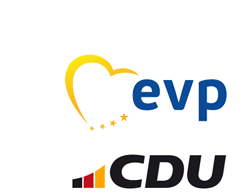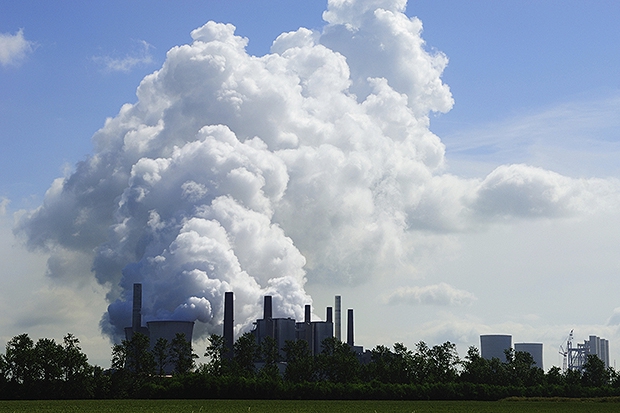Without natural and technical sinks we will not reach our climate targets
Commission proposal expected for Wednesday/ Inclusion in emissions trading under consideration
Experts from CDU/CSU, science and industry called for a stronger commitment of the European Union and the Member States to so-called negative emissions, or technologies to remove CO2 from the atmosphere. In this respect, they generally welcome a proposal of the European Commission on a certification framework for carbon removal, which is expected for tomorrow, Wednesday. In a video conference, Peter Liese, the EPP Group’s Spokesman on Environment; Andreas Jung, the CDU/CSU Group’s Deputy Chair and Spokesman for climate and energy in the German Bundestag; Peter Jahr, the EPP shadow for agriculture, as well as Felix Schenuit, German Institute for International and Security Affairs (SWP) & CDRterra and Anastasios Perimenis, Secretary General of CO2 Value Europe, commented on the expected Commission proposal.
"Without negative emissions, we will not achieve our climate goals. The Intergovernmental Panel on Climate Change (IPCC) in particular has stated this time and again. It literally states 'The deployment of carbon dioxide removal to counterbalance hard-to-abate residual emissions is unavoidable if net zero CO2 or GHG emissions are to be achieved.’ All scenarios assume that after 2050, in Europe we will not only have to be climate neutral, but that removal of CO2 from the atmosphere will have to exceed the emissions of CO2 in order to achieve the Paris climate goal in the long term. Therefore, we need to start developing these technologies as soon as possible. In general, there is the possibility of removing CO2 through natural sinks. These are, above all, the storage of CO2 in forests, the storage of CO2 in the soil through so-called carbon farming and the re-measurement of peatlands. In addition, there are technical solutions for capturing CO2 and injecting it underground. In recent years, however, the use of CO2 and the extraction of CO2 from the atmosphere (direct air capture) have also come into focus. There are already companies that use CO2, extracted from the air, to make products, such as bricks, in which the CO2 is permanently stored. We urgently need to give more support here so that these products are produced on a large scale and thus also become more cost-effective," explained the Environmental Spokesman of the largest group in the European Parliament (EPP-Christian Democrats), Dr. Peter Liese.
Andreas Jung similarly commented: “Climate neutrality by 2050 - in Germany as early as 2045 - is our European contribution to the Paris Agreement. To achieve it, we must mobilize all the forces of sustainable climate innovation: In addition to accelerating CO2 reduction with renewables, efficiency and hydrogen as key pillars, we must also use carbon capture, storage and utilization technologies. We will need all these pillars to achieve climate neutrality and thus effectively combat climate change. After all, certain process emissions in industry cannot be avoided at all. So anyone who opposes these technologies on principle is calling into question Europe as a business location. That's why we need to have this debate now and create a framework."
Peter Jahr, who has also been the EPP AGRI shadow on Sustainable Carbon Cycles states, “For me, carbon farming means above all an opportunity for our European farmers and foresters: on the one hand, they can generate additional income with a business model far away from public funds, and on the other hand, they can be part of the solution in the fight against climate change. However, everything now depends on whether carbon certification can also be implemented easily and unbureaucratically without losing its credibility and quality. That is why I am particularly committed to starting with certification in the forestry sector, as here implementation can proceed without major hurdles.”
Felix Schenuit, scientific expert on the topic agrees that the European Commission’s proposal is an important step towards credible and transparent certification of carbon removal: “It is an essential building block of climate policy to achieve net-zero. In the upcoming legislative process, Member States and the European Parliament should ensure that the prioritization of emissions reductions and liability for potential reversals of carbon removal are key elements of the final framework. If this is accomplished, this new initiative has the potential to position the EU as a frontunner in carbon dioxide removal policy.”
“CCU mineralisation is one of the key technologies to lead to carbon removals, by capturing biogenic or atmospheric CO2 and permanently binding it into products, like construction materials”, said Anastasios Perimenis, Secretary General of CO2 Value Europe, representing the Carbon Capture and Utilisation (CCU) community in Europe. “The publication of a carbon removals certification mechanism has been long awaited by the CCU community and we are looking forward to seeing it adopted at EU level”. He added that “we need legal certainty and clear definitions at EU level in alignment with the latest IPCC recommendations to mitigate climate change, so that a wide range of economic actors can invest into carbon removals. Complementary to carbon removals we continue to need supportive legislation to recognise that carbon captured from unavoidable industrial emissions can be valorised through CCU to replace fossil-carbon in our economy and lead to significant emission reductions and emission-neutral production systems”.
As rapporteur on the emissions trading system (ETS), Liese had also pushed for negative emissions to be recognised within the emissions trading. This was not feasible in the first step, as the other parliamentary groups as well as the Commission and Member States were still hesitant. "Of course, a sound and reliable techniques must be developed and its inclusion must not lead to loopholes. But this is possible and that is why I am glad that we now have a foot in the door. The Commission has been mandated to present a report by mid-2026 to outline how to better incentivise these techniques. Including them in the ETS is a serious option," said Liese.


